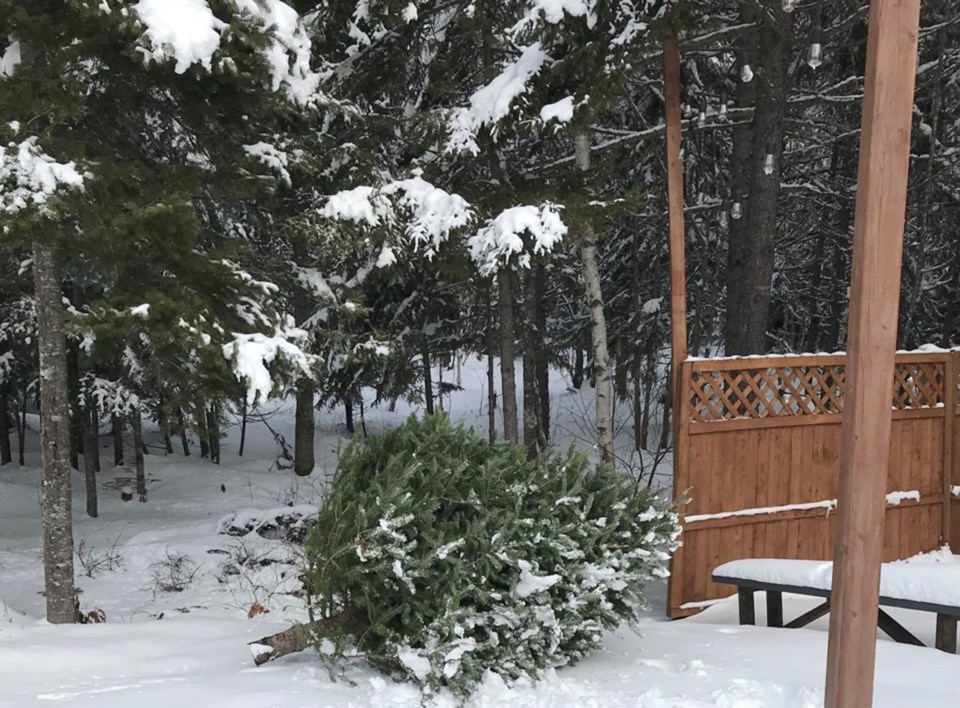Samantha Knight, Weston Family Science program manager for NCC, says leaving it in your backyard over the winter can provide many benefits for backyard wildlife. Your tree can provide important habitat for bird populations during the winter months, especially on cold nights and during storms.
The first step in letting nature help you recycle your Christmas tree is to put it anywhere in the backyard. Prop it up near another tree, against a fence or lay it in your garden. You can even get the family involved by redecorating it with pinecones filled with peanut butter, strings of peanuts and suet for birds to enjoy. These delicious decorations will provide food for birds while they find shelter in the tree.
“Evergreens offer a safe place for birds to rest while they visit your feeder,” says Knight. “Another benefit is that if you leave the tree in your garden over the summer, it will continue to provide habitat for wildlife and improve your soil as it decomposes.”
By spring, the tree will have lost most of its needles, resembling a Charlie Brown Christmas tree. Simply cut the tree branches, lay them where spring flowers are starting to emerge in your garden and place the trunk on soil, but not on top of the flowers.
Knight says the tree branches and trunk can provide habitat, shelter wildflowers, hold moisture and help build the soil, mimicking what happens with dead trees and branches in a forest. Toads will seek shelter under the log, and insects, including pollinators such as carpenter bees, will burrow into the wood.
“By fall, the branches and trunk will begin to decompose and turn into soil,” says Knight. “Many of our Christmas trees, particularly spruce and balsam fir, have very low rot resistance and break down quickly when exposed to the elements. The more contact the cut branches and trunk have with the ground, the quicker it will decompose. Drilling holes in the tree trunk will speed up that process.
Our backyards are ecosystems of their own and provide an opportunity to learn about forest ecology. By leaving our Christmas tree in our backyard, we can understand its life cycle and observe its impact on backyard biodiversity.
There are other uses for Christmas trees. Several municipalities have drop off sites where trees are chipped up and composted or used as trail bedding. Some communities place the Christmas trees on shores to help prevent coastal erosion. And some pulp and paper companies collect and burn them for a fuel alternative to oil





